What’s been flying around this week? Birds that like it wet, birds that love mud, and birds that are different. I’m continually amazed at the diversity in our avian world. For each habitat in our world, wet-dry, mountain-valley, desert-forest, lake-sea or swamp-grassland there are beautiful little (or big) feathered creatures that hop, flutter, creep, swim or perch in their special worlds. One such creature is the little inconspicuous Le Conte’s Sparrow, a beautiful orange-faced sparrow of damp meadows and shallow marshes; habitat not abundant in the Big Country. But just last week while walking in the diversion ditch at Dyess AFB, a ditch that is slowly being restored to riparian habitat, this small little secretive sparrow hoped up on a tiny annual, posing long enough to allow me to take its picture.
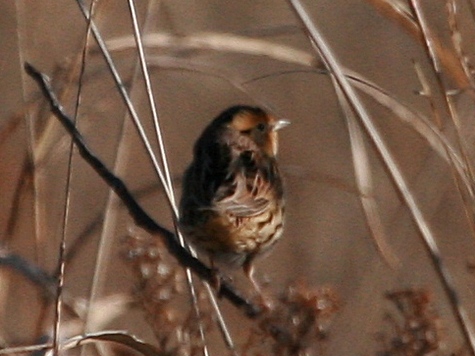
The species was named for John L. Le Conte, a physician friend of J.J. Audubon and a distinguished entomologist in about 1790. This orange-faced sparrow has been likened to a twenty-dollar gold piece if seen up close. Sorry about the poor quality photo; I’m still attempting to get a drop-dead gorgeous photo but I have a feeling the only one to drop dead will be me due to frustration. The field guides weren’t joking when they state their behavior as secretive.
On our field trip to Jones County and Lake Hamlin, we saw birds of the grasslands, Horned Lark:
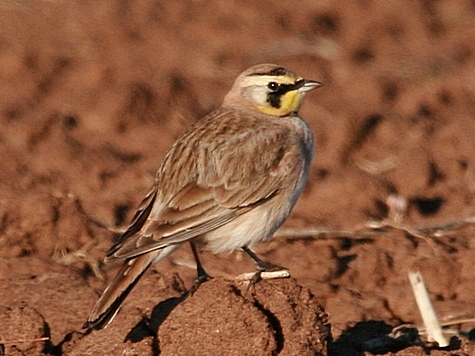
and meadowlarks. Some birds appear to like mud, unlike some vehicles I know. This meadowlark seemed to revel in the muddy water while another friend waited his turn to take the plunge.
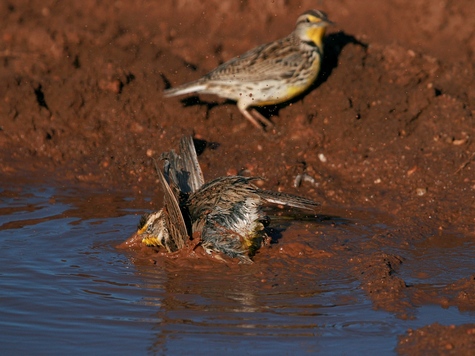
And the bird that was different this past week:
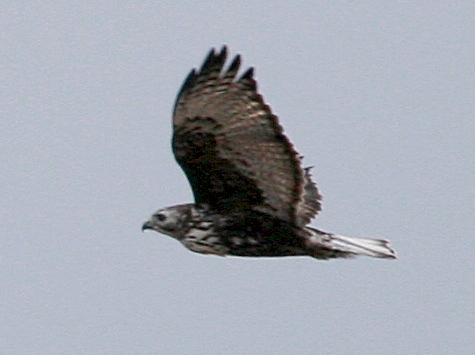
a Harlan’s Hawk, subspecies of the Red-tailed Hawk. It took me awhile to figure it out because this taxon has no red in the tail, a very light face, the characteristic patagial mark is missing (because of all those black feathers, no obvious belly band, and I’ve had no experience with this group of hawks. See more pictures of this unusual Red-tail.
And one more photo which is a once-in-a-life-time shot comes from Jay Packer:
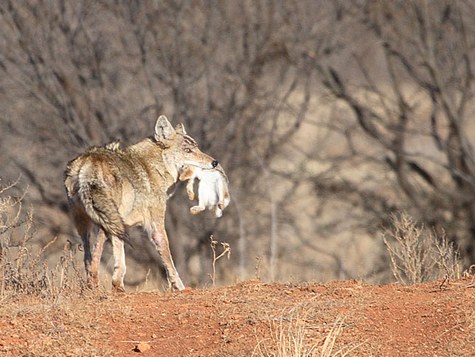
You can read more about it by following the link to the photo gallery. To see more photos of those birds (and coyotes) seen last week, click on the Late January Birds Gallery. To see a complete list of the Hamlin Field Trip sightings, click on January 27 Sightings section.
One response to “Late January Birds”
great shots. Keep up the good birding and sharing for those of us who do not get out like you.